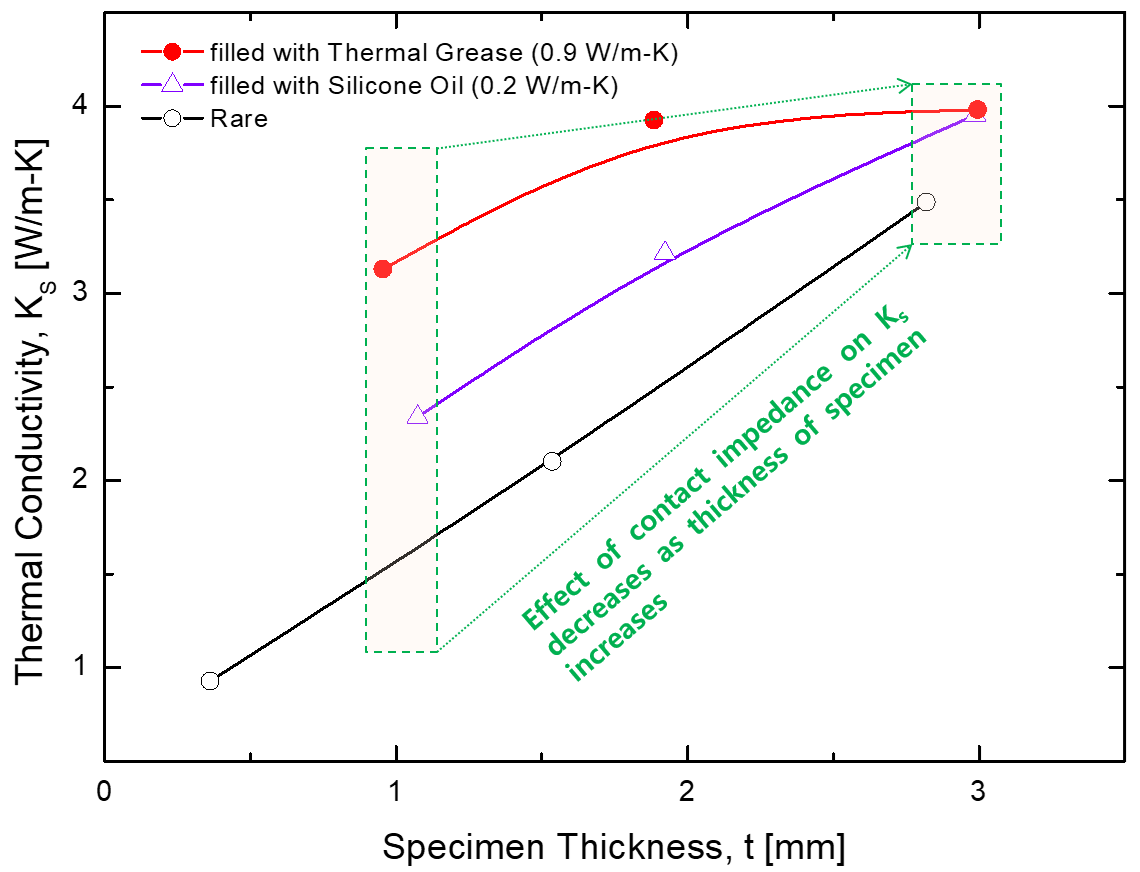Interpretation of Apparent Thermal Conductivity
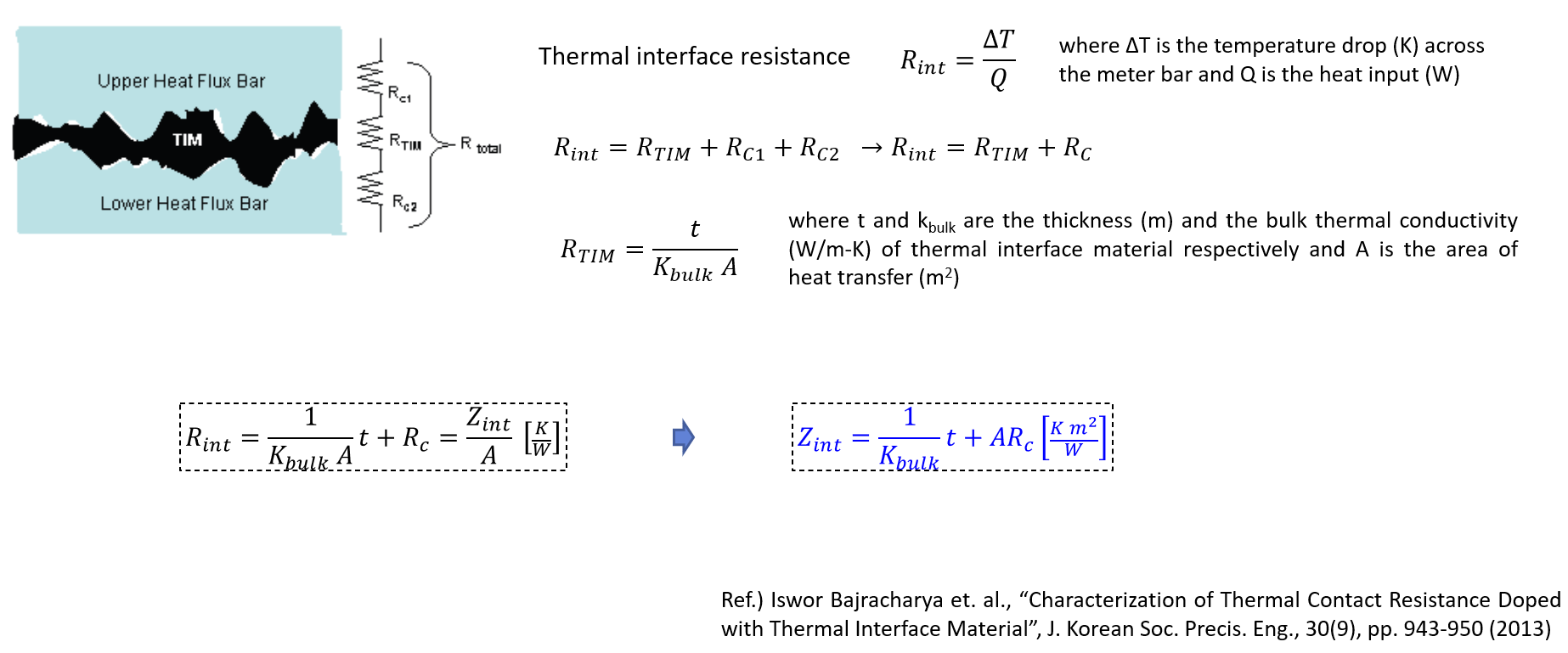
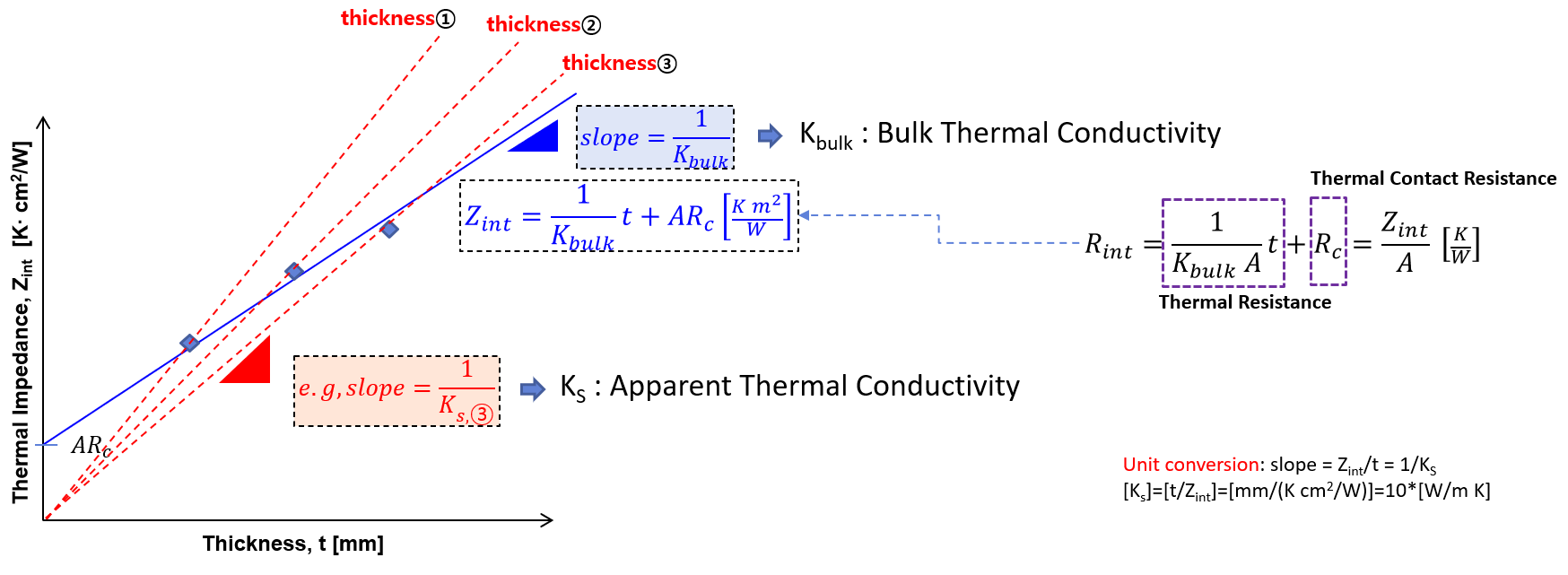
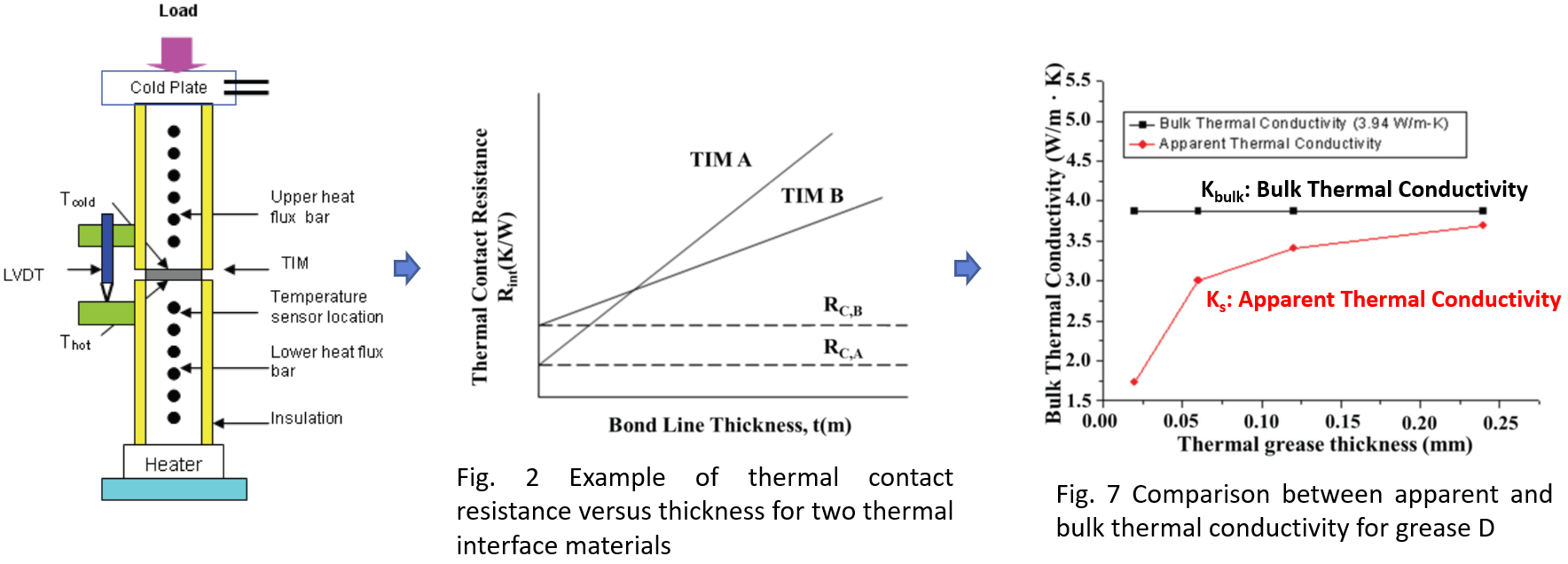
Note that the apparent thermal conductivity Ks is not a material’s conductivity because of having contact impedance, which seriously depends on the intimacy of the contact interface.
Thermal adhesives and gap fillers are used in liquid state when applying and then in solid state when cured. The interface between heat source and cooling plate in service condition is intimately close contact, which is completely different from the interface state when measuring thermal conductivity of cured adhesives or gap filler.
In the latter case, high contact impedance due to the gap between specimen and copper plate of the thermal conductivity measuring equipment (ASTM D5470). In contrast to this, an intimate contact interface develops between heat source and cooling plate in actual service situation, resulting in very low contact impedance. The value of Ks measured by the equipment is under-estimated and is substantially lower than that of the actual Ks of the adhesives and gap fillers in service conditions.
Example : Apparent thermal conductivities measured for 3 cured sheets made of our own polyurethane adhesives
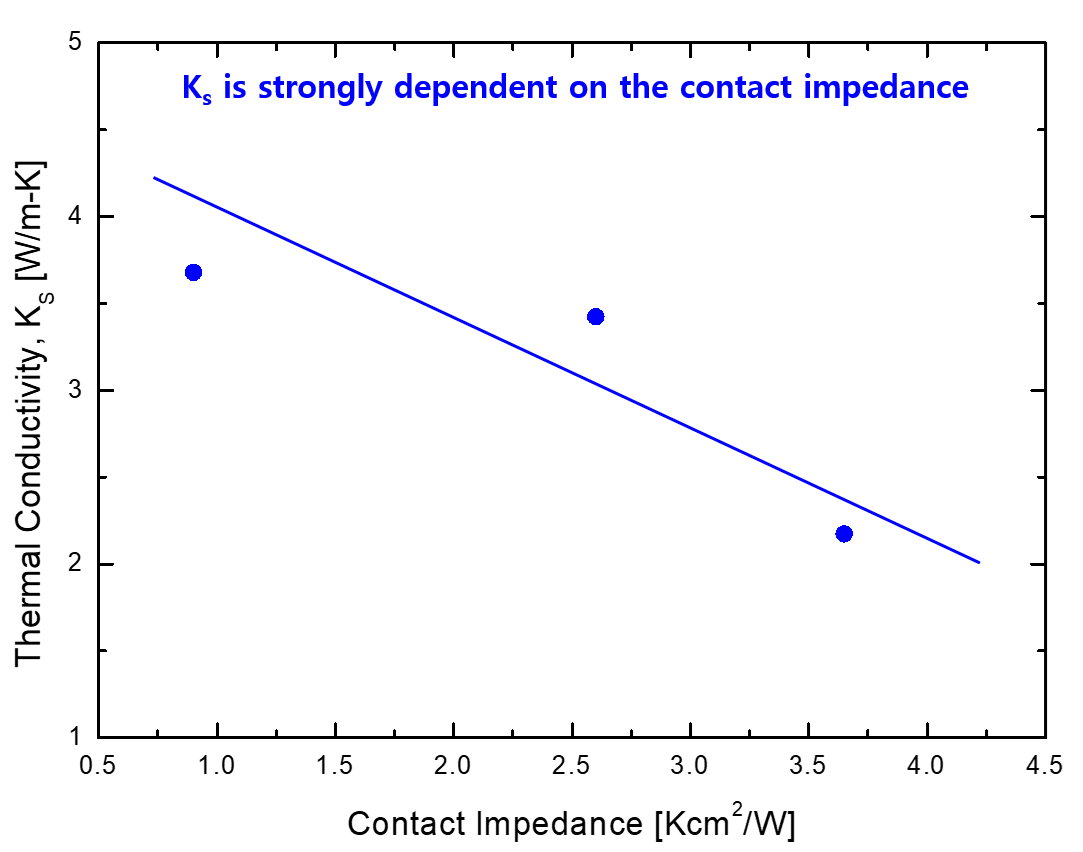
Note that apparent thermal conductivities Ks measured for an identical specimen are substantially different as contact impedance varies by gap filling.

